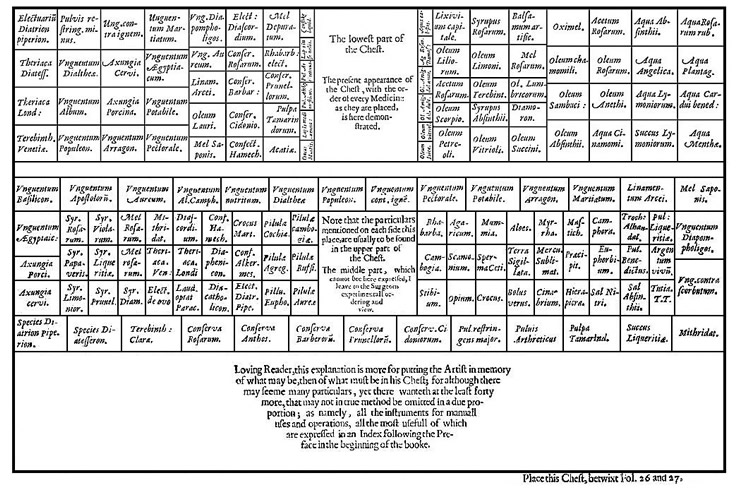
John Woodall's Medicine Chest Ingredients: 1 2 3 4 Next>>
John Woodall's Medicine Chest Ingredients, Page 3
The Variety of Medicines in a Sea Surgion's Medicine Chest
"Even the smallest ship must have carried a massive wooden iron-bound chest to contain Woodall's long list of items." (John Kirkup's Introduction to the reprinting of John Woodall's book, the surgions mate, p. xvii)
Woodall admits in his book, "I would not doubt at all without all these recited medicines,
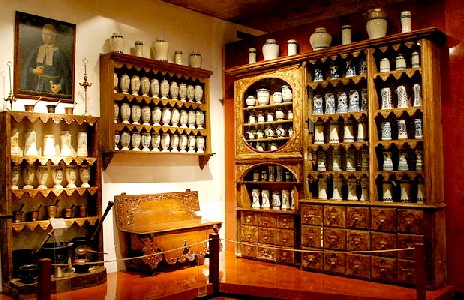
Photo: Alejandro Linares Garcia
An Apothecary Display At the Franz Meyer Museum in Mexico City
to finde sufficient healing medicines in the Surgions Chest for double the occasion that can be imagined"1. This margin of safety was important, particularly since Woodall was standardizing the process of supplying ships with appropriate medicines.
Writing 75 years later, the ever-pragmatic sea-surgeon John Moyle explains that the medicine chest contains "all the room you can expect to carry Medicines in, therefore it behoves you to put up only them that are most catholick [universal] import, one of which [medicines] will serve to cure several diseases."2 Woodall was writing for the surgeons of the East India Company and the king's ships, each of whom had deep pockets. Moyle was writing to all of the English sea surgeons, including those who served on small merchant ships. So Moyle advised the use of multi-purpose medicines which "are fitter to be carried by the Sea Surgeon, than others that were designed for particular humours; and that because you have not stowage for all."3
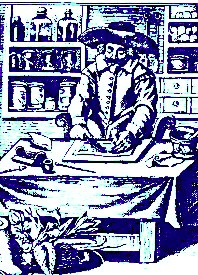
From The Workes of
That
Famous
Chirurgeon Ambrose Parey (1649)
With this in mind, Moyle listed 34 concoctions 'to be made up as there is occasion' along with their purposes in his book.4 Immediately following these, he added what he called 'The Exemplary Invoice' of medicine that should be included in his medicine chest for the making of such concoctions. This consisted of 144 ingredients, many of which were the same as were included in Woodall's chest.5
The medicines Woodall listed weren't necessarily the only ones that a surgeon might carry. Woodall himself admitted that the surgeon should stock "what alterations of operations he findeth in each medicine, and what medicines keepe their force longest, & what perish soonest. Also what variety the climate causeth, of the Doses as well of the laxative as opiate Medicines."6
Still, with the variety that Woodall and others recommend, the sea surgeon should have been well prepared for most situations.
1 John Woodall, the surgions mate, 1617 Edition, diagram opp. p. 143; 2 John Moyle, The Sea Chirurgeon, p. 3; 3 Moyle,p. 4; 4 Moyle, p. 11-29; 5 Moyle, p. 30-5; 6 John Woodall, "The Office and dutie of the Surgions Mate", the surgions mate, 1617 Edition, p. 3-4
Apothecary Authors Used To Explain Woodall's Chest

Apothecary Nicholas Culpeper
One problem with trying to identify the composition of the medicines included in Woodall's chart for the medicine chest is that all the medicines were identified in Latin. Up until Nicholas Culpeper wrote his seminal work in 1649, the explanation of the ingredients were written in Latin, the language of the enlightened.
On the following page, I have attempted to use Woodall's description of the various medicines where he provides them. Sometimes his descriptions are too brief to provide a sufficient explanation of the medicine. Sometimes Woodall only identifies which illnesses the medicine was used for without explaining the medicine itself.
For complex medicines, Woodall rarely describes how they were made or what ingredients were included. This makes perfect sense given that his surgeons would not have mixed the medicines; he would have purchased them from an apothecary. In fact, a land-based surgeon was not even supposed to concoct medicines - this was the purview of the Worshipful Society of Apothecarys guild.
Because of this,
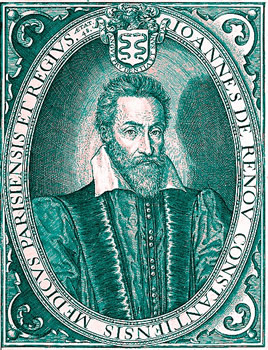
French Apothecary Jean de Renou
we have to turn to apothecary authors who wrote post-Culpeper dispensatories to provide a more complete picture of what each medicine is and does. Nearly all of these books were written after Woodall's chart was published in 1639. This is primarily because up until 1649, most medicinal recipes were written in Latin, which takes a long time to translate. Instead, I try to use books that are near the golden age of piracy (roughly defined as 1690 - 1725), although even this is not always possible.
The primary books used on the next four pages are:
Nicholas Culpeper's A Pharmacopoeia Londeniis (1720 Edition)
John Quincy's The Dispensatory of the Royal College of Physicians in London, (1727 Edition)
James Rennie's A New Supplement to the Pharmacopoeias (1833 Edition)
Jean de Renou's A Medicinal Dispensatory (1657 Edition)
Woodall describes a wide variety of medicines, some of which are not easily found. So the list of other sources used for this purpose is quite extensive. Those listed below are only used when the medicine could not be easily found in the above sources. They include:
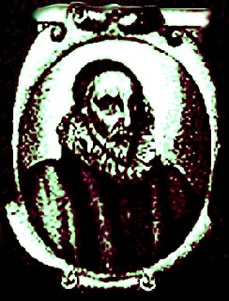
French Apothecary Joannes Jacob Wecker
Thomas Brugis, Vade Mecum, Or, a Companion for a Chirurgion, 7th ed. (1689)
Arnold James Cooley, Cooley's Cyclopedia of Practical Recipts (1872)
Dispensatory of the Royal College of Physicians (1747)
Edinburgh Dispensory, 2nd ed. (1789)
Michaelis Ettmuller, Opera Omnia (1727) [Translated from Latin]
Leonardo Fioravanti, An exact collection of the choicest and more rare experiments and secrets in physick and chyrurgery (1657)
Samuel Frederick Gray, A Supplement to the Pharmacopeia (1821)
Jacques Guillemeau, The French Chirurgerie (1597)
Johann Daniel Horstius, Pharmacopeoia Galeno-Chemica, Catholica (1606) [Translated from Latin]
Robert James, Pharmacopoeia Universalis (1747)
Angelo Paglia & Bartholomaeus, In Antidotarium Joannis filii Mesue censura: cum declaratione simplicium medicinariu (1543) [Translated from Latin]
John Pechey, The Compleat Herbal (1707)
Pierre Pomet, A Compleat History of Druggs, 3rd Ed. (1737)
Johann Christoph Sommerhoff, Lexicon pharmaceutico-chymicum, latino-germanicum et germanico-latinum (1701) [Translated from Latin]
Johannes Jacob Wecker, Le Grand Thesor ou Dispensaire et Antidotaire, (1616) [Translated from Old French by the author]
I also used the excellent list of medicines identifed by Joan Druett in Appendix A in her book Rough Medicine to help identify some of the more arcane medicines. I have included many of her comments.
Some Notes for Understanding the Descriptions of Woodall's Medicine Chest
First note: Much
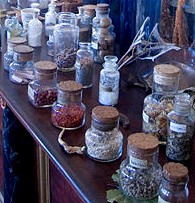
Medicine Containers
of John Woodall's text is mispelled and you will even find the same word spelled in different ways within a single entry. I have included inline explanations of some of the more atrocious spellings and obscure words in square brackets, but to do so for all of Woodall's text would make it almost unreadable. Instead, I give you this simple rule-of-thumb: when in doubt, sound it out. Woodall's commentary is very phonetic. Once you get the hang of it, it has an almost charming quality,
Second note: Each medicine's name is written in Latin, often abbreviated for space, as was the tradition for millenia before the golden age of piracy and centuries after. For the herb/plant/flower names this is understandable; it is the name by which most learned articles on medicines still refer to them. However, for the more common terms, this can be confusing. The first word in a medicine's name is usually the form it takes. To make these forms clearer for modern readers, I am including a simple dictionary here for reference.
Acet, Acetum - Vinegar of
Aq, Aqua - Water of, often distilled
Conser, Conserv, Conserve, Conserva - Jelly of
Conf, Confectio - Concoction of
Elec, Elect, Electuary, Electuarium - A Viscous Liquid, Made By Combing Ingredients With Honey or Sugar
Lapis - Stone
Linament, Linamentum - A Topical Medicine
Mel, Mell - Honey of
Ol, Oleum, - Oil of
Pillu, Pilulæ - Pill of
Pulpa - Pulp of
Pu, Pul, Pulvis, Puluis - Powder of
Sal - Salt of
Species - The basic form (the 'simple')
Succus - Juice of
Syr, Syrupus - Syrup of
Terebinth, Terebinthinae - Turpentine
Tr, Troch, Troche, Trochisc - A lozenge
Ung, Unguent, Unguentum - Ointment of
John Woodall's Medicine Chest Ingredients Introduction
Below is a large image of Woodall's medicine chest which I have cleaned up to make it more readable. (I realize it is still hard to read - there's a lot of information there.)
|
|
John Woodall's Interactive Medicine Chest
To make this all more manageable, I have divided the chest into four parts, each of which will appear on the following pages. The first will be the upper left part of the chest, shown on page 4. The second is for the upper right part of the chest on page 5. The third is the lower left part of the chest on page 6. The fourth is the lower left part of the chest on page 7. Each of these diagrams contain hotlinks so that you can place your mouse over that box and click on it to jump to a description of the medicine.

